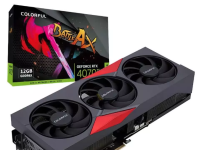And a whole stack of new features.
In context: AMD took the audience on a roller coaster ride by introducing the fourth generation of Epyc processors for data centers at a live event last week. The presenters threw number after number into the audience throughout the performance, so buckle up while we sort them out.
You should start with the name of the series: 9004, followed by 7003, 7002 and 7001. Why the nine? I’m not sure, but the last four are a reference to both the generation and the architecture of Zen 4. The codename of the series is Genoa, continuing AMD’s tradition of naming the Epyc series after Italian cities that in the past included Milan, Rome and Naples.
AMD has also developed proximity to number five. Eight DDR4 channels turned into twelve DDR5-4800 channels (up to 6 TB per socket), and 128 PCIe 4.0 lines gave way to 128 PCIe 5.0 lines and 64 CXL 1.1+ lines. The series also switches from 7nm TSMC to 5nm and uses a new socket called SP5 (LGA 6096). And finally, AMD is finally joining Intel with support for the AVX-512 instruction set.
Core Model/Base Threads/Clock Frequency TDP Default Price (USD)*
Epyc 9654 96/192 2,40/3,70 GHz 360W 11,805 USD
Epyc 9654P 96/192 2.40/3.70GHz 360W USD 10,625
Epyc 9634 84/168 2,25/3,70 GHz 290 W 10 304 USD
Epyc 9554 64/128 3,10/3,75 GHz 360 W $9,087
Epyc 9554P 64/128 3.10/3.75GHz 360W 7 104 USD
Epyc 9534 64/128 2,45/3,70 GHz 280 W $8,803
*All prices are indicated when ordering from 1000 pcs.
AMD has announced 18 models in total (the tables are listed above and below). They have from 16 to 96 cores and have suffixes denoting their type: F — fast and inefficient; P, only for one socket; and without a suffix for regular and two-socket. AMD has shared much more detailed specifications than we could fit here, such as cache volumes and configurable TDP, so if you’re interested, start with AMD’s technical description and then check out their documentation page for Genoa.
Core Model/Base Threads/Clock Frequency TDP Default Price (USD)*
EPYC 9474F 48/96 3.60/4.10GHz 360W 6780 USD
Epyc 9454 48/96 2,75/3,80 GHz 290 W $5,225
Epyc 9454P 48/96 2.75/3.80GHz 290 W 4598 USD
Epyc 9374F 32/64 3.85/4.30GHz 320W 4850 USD
Epyc 9354 32/64 3,25/3,80 GHz 280 W 3420 USD
Epyc 9354P 32/64 3.25/3.80GHz 280W 2730 USD
Epyc 9334 32/64 2,70/3,90 GHz 210 W $2,990
AMD claims that Zen 4 has an IPC advantage of ~14% over Zen 3 in server scenarios. It states that the increase is due to a doubling of the L2 cache capacity to 1 MB and improvements in the external interface, branch prediction, loading/saving and execution mechanism. Genoa also more than doubles the theoretical memory bandwidth of each socket from 205 GB/s to 461 GB/s.
According to AMD, which used the Java-based SPECjbb 2015 tool as a reference, adding a slightly higher clock speed and a significantly increased number of 9654 cores, the new flagship is 1.9 times faster than the previous one. Of course, the 9654 costs $11,805, and the 64-core 7763 is a third cheaper — $7,890, but the Genoa part is still more expensive.
Core Model/Base Threads/Clock Frequency TDP Default Price (USD)*
EPYC 9274F 24/48 4.05/4.30GHz 320 W 3060 USD
Epyc 9254 24/48 2,90/4,14 GHz 200W 2299 USD
Epyc 9224 24/48 2,50/3,70 GHz 200 W 1825 USD
EPYC 9174F 16/32 4.10/4.40GHz 320 W 3850 USD
Epyc 9124 16/32 3,00/3,70 GHz 200 W 1083 USD
If you’re not thrilled with AMD’s carefully selected metrics, Phoronix has a detailed overview of 9654 and 9554 on launch day. It’s worth reading, but in the end it says that new Epyc components come out on top in every multi-system. basic test and land among Intel Xeon parts in light single-threaded workloads. The flagships of Genoa are simply “bigger” in all respects: more performance, more power consumption, and more expensive. But they are so fast that they are still more efficient and more profitable than competitors.




